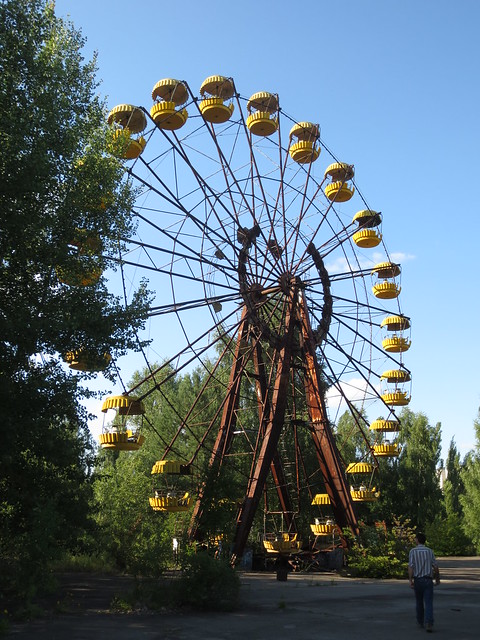
In April 1986, the Chernobyl nuclear power plant in Ukraine exploded and heavily contaminated nearly 40,000 square miles with radioisotopes. The contaminated area became known as the Chernobyl Exclusion Zone in Ukraine and the Polesie Radioecological Reserve in Belarus. Today, the site remains heavily contaminated and access is restricted primarily to staff working to stabilize the remnants of the exploded reactor.
Despite the access restrictions, there is a growing problem of wildfires that pose health risks to firefighters and surrounding populations. Much of the contamination is from radiocesium that cycles through plants, soils and living organisms much like nutrients do. Wildfire releases contaminants and smoke has the potential to redistribute these toxins for long distances.
Shelia Slemp, Eastern Europe program manager for the Forest Service’s International Program, invited Alan Ager a research forester from the agency’s Rocky Mountain Research Station, to help study the problem of wildfires in the area contaminated by the Chernobyl disaster.
“There was no shortage of interest from the Ukrainians, but it took time to become acquainted, share data and resources and effectively collaborate on the science and technology to address the problem at hand,” Ager said. “We now have a robust, collaborative group of scientists and managers from Ukraine, Belarus and the U.S.”
The work started with a workshop in 2017 where scientists and emergency managers from Ukraine, Belarus and the United States gathered to discuss mitigation strategies. After the workshop, Ager and his retired colleague Richard Lasko, former deputy director of the Forest Service’s Fire and Aviation Management Division, built a wildfire simulation system to predict hot spots within the contaminated areas. These hotspots are areas where fires are likely to start, spread the stored radioactive contaminants.
The modeling relied heavily on new data assembled by Ukrainian scientists from the Life Sciences University in Kiev, including new maps of where fires are likely to start and what materials in the area might fuel them.
One of the primary findings from the study revealed that tight controls on access to Belarusian Polesie Radioecological Reserve since the mid-1990s dramatically lowered the frequency of human-caused fires, which also lowered the probability of those fires spreading radionuclides.
The research team used the modeling system to identify optimal locations for fuel breaks, to cut off fires from the fuels they need to grow and spread radionuclides. In 2016, Ukraine established the Chernobyl Radiation and Ecological Biosphere Reserve within the contamination zone. The biosphere contains sub-areas with specialized goals for fire prevention and management. The Ukrainian government continues to use Forest Service research to help design the fire management plan for biosphere.
“The end result of this project is that the Ukrainians now have a state-of-the-science wildfire modeling system to guide decisions about managing wildfire risk in the contaminated areas,” Ager said.

